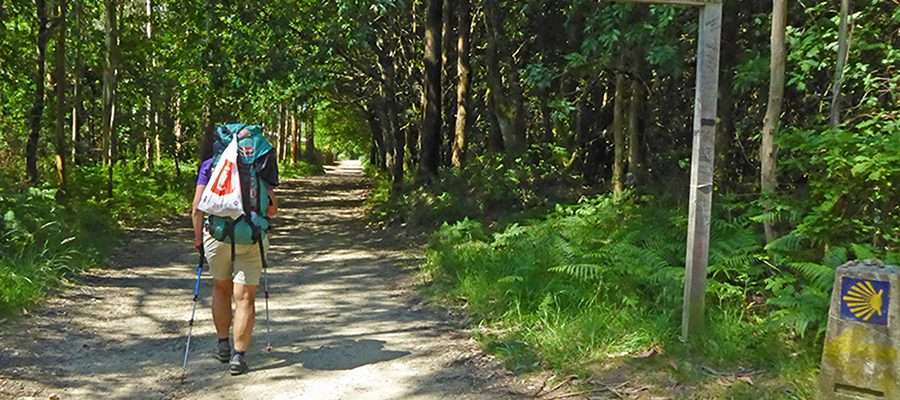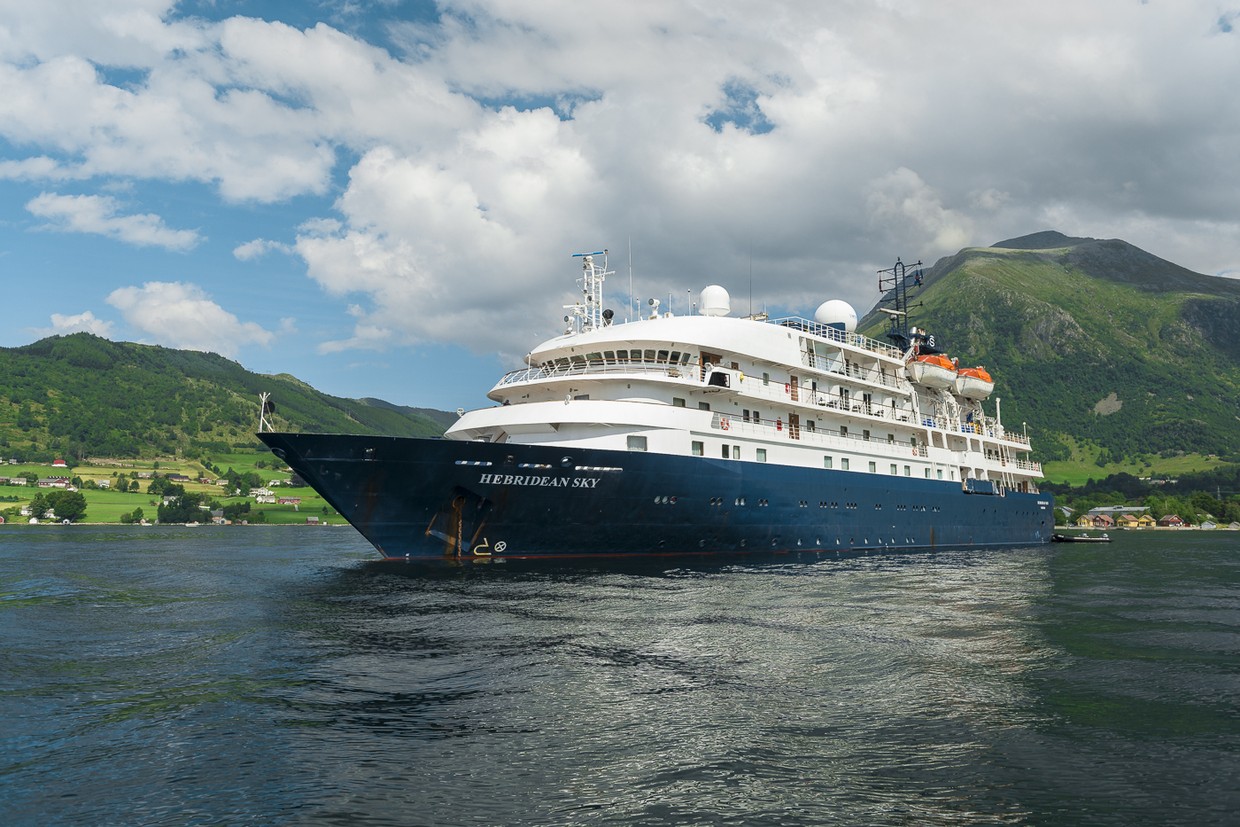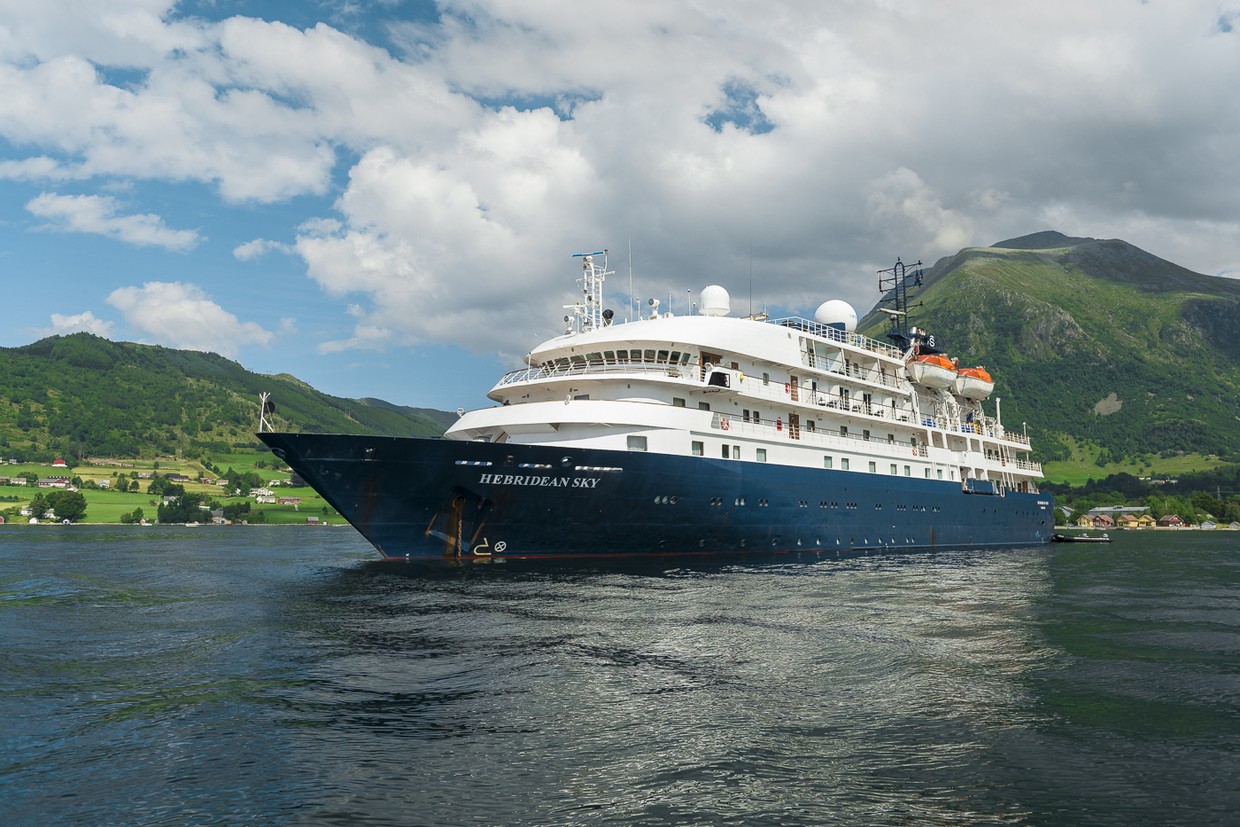The Camino de Santiago, St James Way, the Route of Santiago de Compostela and the Road to Santiago – no matter what you call it, it all leads to the shrine of the Apostle St James the Great in the town of Santiago in Galicia, Spain.
These pilgrimage routes have been walked for over 1000 years and were traditionally followed by people for spiritual growth, as it was believed that the remains of Saint James are buried under the shrine. Since then, hiking and cycling enthusiasts have taken on the various routes of the Camino as a form of adventure travel and other travellers who may not be experienced hikers are also taking on the challenge.
If you’ve been thinking about walking the Camino, but are not sure what to expect – we sat down with Glenyce Johnson, Co Founder of Wandering the World to find out more about this travel experience. Glenyce has walked about 6,000km of the Camino, including all paths into Santiago and this is her 4th year on the route. She has also escorted over 300 people on the Camino to date.
Here’s what Glenyce has to say about taking on the Camino de Santiago.
When was the first time you walked the Camino?
I took on the 890km walk from St Jean Pied de Port to Santiago de Compostela and onto Finisterre in 2013. It just seemed like a really great way to spend 45 days. Little did I know how addictive it would become.
What inspired you about the Camino to make you want to return and escort groups?
I really wanted to share this uplifting experience, I felt walking was so good for my mind and my body, and believe it or not, really relaxing! I wanted to offer this unique walk for others to enjoy, and I felt some travellers would prefer walking parts of the Camino with the comradery and support of a group. I found walking into Santiago with a group hugely rewarding and satisfying. I also get a big kick out of enhancing other people’s journeys, whether people embark on the epic 800km on their own, or a smaller section self-guided, I arrange the day to day itinerary to stay at the more personal places for everyone to get a true sense of the Camino.

Glenyce on one of her many Camino trips
When is the best time to walk the Camino?
There are many ideal months, however it really depends on where you’re starting your Camino, for example starting at St Jean Pied de Port at the base of the Pyrenees and walking the full distance to Santiago, or even onto Finisterre, means taking the weather into account at the beginning and the end of your walk, as the full journey is approximately 42 days, with a few essential rest days. If you plan to walk the entire 790km crossing the Pyrenees is the first challenge and it is critical to get the weather on your side. Commencing mid-April thru to early June, alternatively early to mid-September usually offer the best conditions to cross this amazing landscape, and have a timely arrival weather wise into Santiago as well. And if you continue to the ‘end of the world’, Finisterre, add another 4 days, so the latest you would want to arrive is late October if you are looking for sunshine. The most popular route for people wanting to experience the Camino without walking all the way, is walking from Sarria to Santiago 120km, or for those a little more adventurous 15 days (Leon to Santiago, Porto to Santiago), the best months are starting your Camino in May and finishing in early July, or starting in late August and finishing late October. Unlike the Europeans, some people want to avoid the heat, but to be honest with the world’s erratic weather patterns it can be unseasonably hot, or wet at unpredictable times. And warmer days can be avoided by leaving early on occasion.
What can people expect to see along the routes?
There is a great mix along the various Camino paths, quaint villages vary in population, some so small if you blink you’ll miss them, plus some substantial sized cities that offer some incredible architecture, all steeped in history such as the walled city of Leon, or Burgos, where you could strike it lucky and arrive for one of their many festivals. There is an abundance of nature, farmland animals, many a domestic pet, and endless rows of vines (ideal spots for a picnic). Portugal has a picturesque coastal Camino path, and of course other pilgrims and their stories all add to the amazing journey.
There are many different routes and ways to walk the Camino, for someone just starting out how do they go about deciding where to start?
A good way to get a real taste of the Camino, without walking the entire journey is a 15 day (13 days of walking) path, either in Spain, or combining Portugal and Spain. Whilst the 120km path from Sarria to Santiago is popular to do in 6 or 7 days, there is more of an immersion starting a little further back and also a great sense of achievement, as well as having some quiet time before the busiest part of the Camino. Once people enjoy one path into Santiago, they tend to build on that, and choose other sections. For people who want a real challenge, the French Way (traditional path 790km), Portugal Camino (starting in Lisbon (600km), the Camino del Norte starts in San Sebastian, arguably the cuisine capital of the world (800km), and the Via de la Plata, commencing in Seville (1,000km), are a few suggested paths.

Describe a typical day walking the Camino, how much walking is involved and what can they expect?
Rise around 6.30/7am, and the first task is to prepare your feet, some people tape their toes and/or use hiker’s wool in their socks to assist the prevention of blisters. Pack your bag (I use a luggage transfer service so you can enjoy the walking) leave your bag at reception, ensure you have the essentials in your day bag, and only carry around 4kg, your water is the heaviest. Breakfast starts when the baker arrives with the bread, between 7.30 and 8am, the breakfast offering differs from place to place, however there is usually good coffee, juice, tasty bread with a mix of ham (jamon), cheese, jam, if you are lucky, eggs, and of course the larger cities will have a substantial buffet. Leaving around 8.30, the first coffee stop is usually around the 4km mark, which is typically an hour away, give or take the odd kilometre. A snack is always essential to have on hand (a small supply of nuts, bars, fruit), to keep up your strength. Lunch breaks can be on the way, either in a field, among the vines, or a small outdoor bar, so either a sandwich (boccadillo), salad, or some tasty local nibbles. If it is a shorter day without too many hills and the weather is on your side, I walk my 20 odd kilometres to the village where I am booked for the night and have lunch there. In Spain the lunch is anything up til 4pm before it turns into tapas. On arrival I like to put my legs straight up against the closest wall to release the lactic acid build up, looking after your feet and legs is one of the most important things for an enjoyable Camino. Changing socks is another trick that works for me, each hour or two I put on a dry (not necessarily clean) pair of socks, and hang my damp ones on my day bag with a nappy pin (too much information I know but I have sweaty feet, and this has proven to solve any possible blister issue). I may choose to have a short sleep in the late afternoon and then get together for a pre-dinner drink. The dinner is usually a highlight, tasty local food accompanied with a drop of regional wine. Retiring for the day is typically around 9.30pm, guaranteeing a great sleep on the Camino, unless you choose a dormitory (which I don’t recommend unless you are under 25!)
How can people prepare for the Camino, do you recommend training before they depart?
Train well, backing up a 20km day, one day after the other is a struggle for most people for the first 3 to 4 days, then a new level of fitness is gained. If you do uphill training as well as on the flat, this will put you in good stead for your Camino. Your training should start a couple of months before your Camino, longer if possible. The more training, the more rewarding and confidence building for your preparation.
What path is your favourite into Santiago?
Each Camino, has something different to offer. The most scenic path into Santiago is the beauty of the Via de la Plata, very few take the 1,000 walk from Seville, so it is quiet of pilgrims, however it is the last 100km of this route that is most impressive. The Portugal Camino from Porto, known as the friendly way, is a week walking in Portugal and another week in Spain, there is also the inland path and coastal path, both equally scenic and a great cultural blend. The traditional path walking across Spain has become increasingly popular in the past few years in particular, and even though the last 120km stretch from Sarria to Santiago is busy with pilgrims, as this entitles the Compostela, there is an emotion here like no other on arrival. You can sense the energy and satisfaction of those who are going the entire journey, and even if you are only doing the token distance relative to the 790km, you feel a sense of belonging to something special, a part of history that you have carved out for yourself.

What’s your tip for anyone taking on this adventure?
Look after your feet, which is also a part of the training to get your feet used to your walking boots and used to the longer distances. Ensure you have the right size shoes, a size larger is best to allow room so your toes are not jammed against the front of your shoe, which helps to prevent blisters. Invest in walking poles, not only do they give you a helping hand to lean on when your legs and feet are feeling a little tired, they also assist your posture and steady you on the up and downhill stretches. AND, go with an open mind and let the Camino work its magic.
Can you share with us a special memory from one of your walks?
I have so many really memorable occasions, but probably my very first night on the Camino in Orisson after walking straight up the mountain on the French side of the Pyrenees was one of the real highlights for both scenery and emotion. I shared my first meal with a room full of people who were embarking on the journey of a lifetime, walking across Spain. After our dinner each person was invited to share the reason they made the decision to walk the Camino de Santiago. There were about 30 of us, a mix of gender, and ages from 18 to 75. Everyone had a story, mainly looking for a significant change in their lives and they believed the spiritual path to Santiago would offer something new and exciting. Some people just wanted a challenging holiday and others were focused on health and fitness. There were also a variety of nationalities, one Korean man in his 70’s who couldn’t speak English sang a short tune, and even though no-one understood a word, there wasn’t a dry in the house as his opera sounding voice reaching all the high notes as he gestured humbly with his hands as if to say…Buen Camino (have a great walk).
You can walk the Camino independently or as part of an organised tour and we have experienced consultants here at Peregrine Travel Centre SA who have walked the Camino before and are happy to assist you with your Camino plans. Please contact us if you would like to know more.
Our team member Bronny is escorting a Portuguese Camino small group tour in 2018, which is now fully booked. Bronny will also be escorting a leisurely version of the Camino from Sarria to Santiago in 2019. Click here to find out more or call Bronny on 8223 5905 to have a chat.






